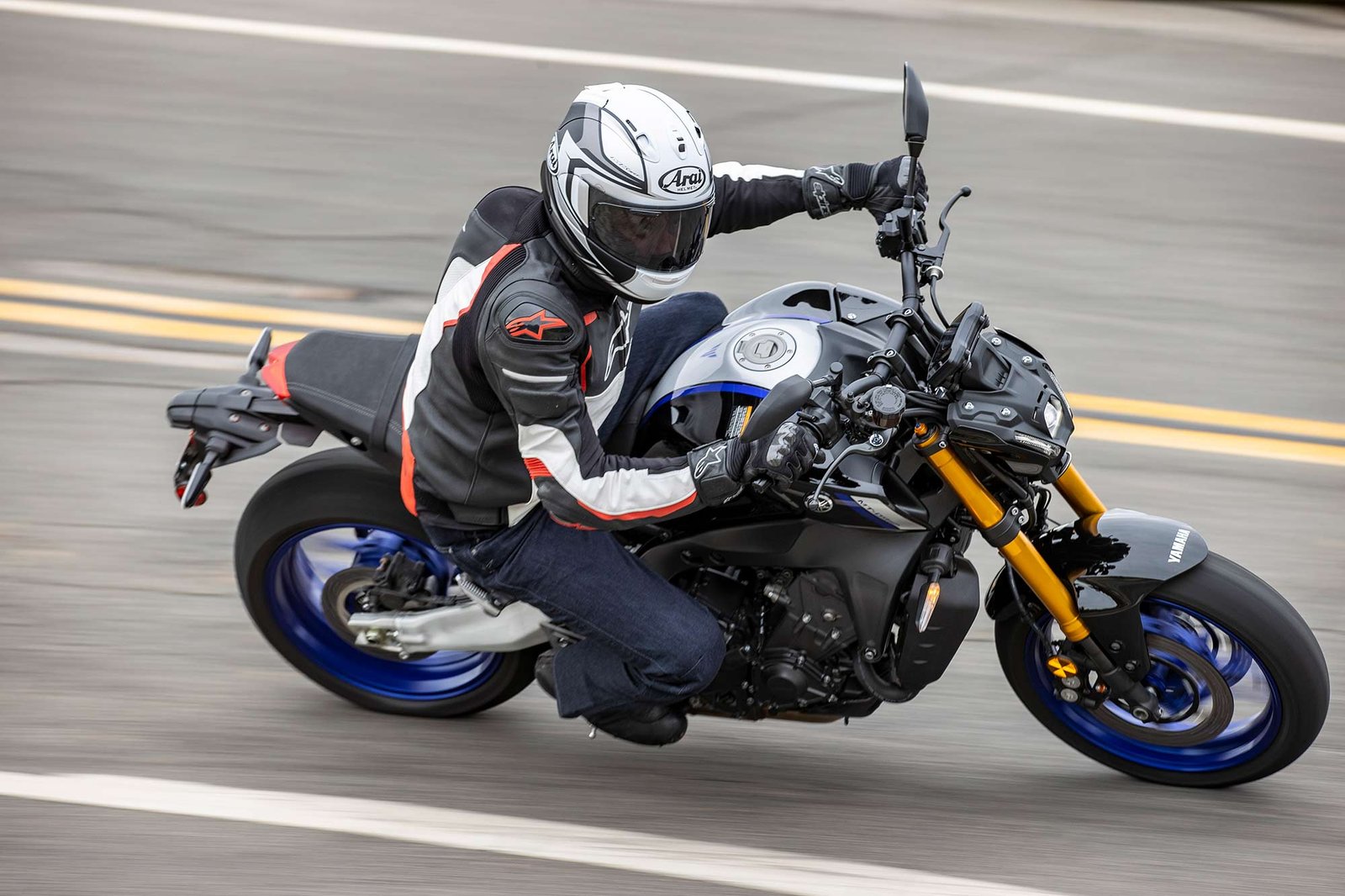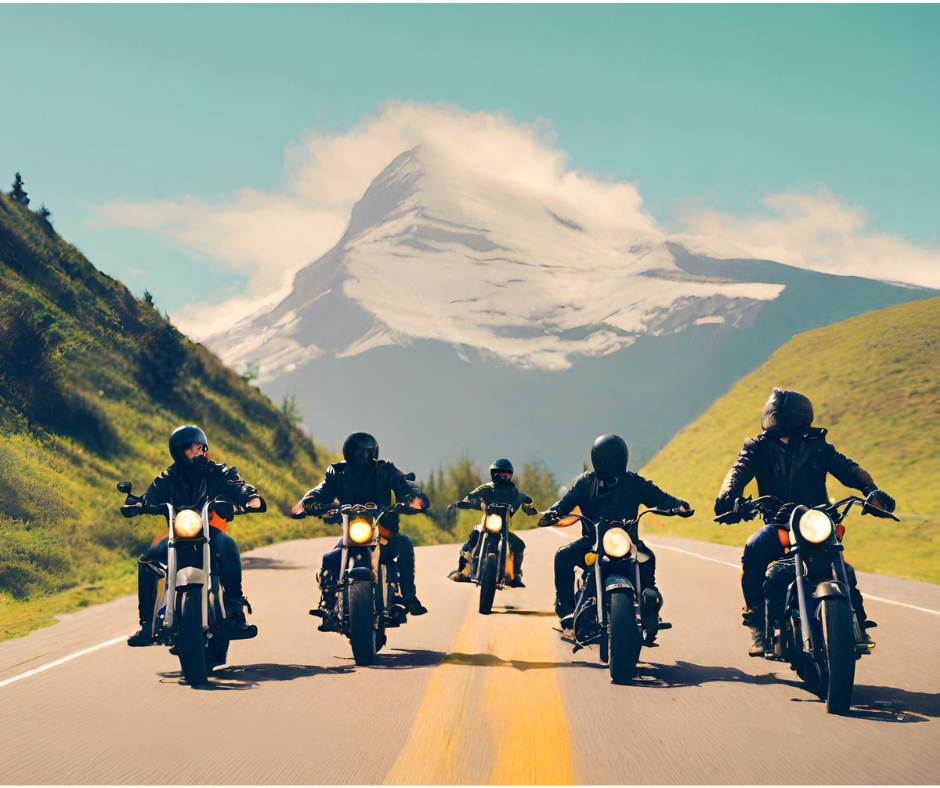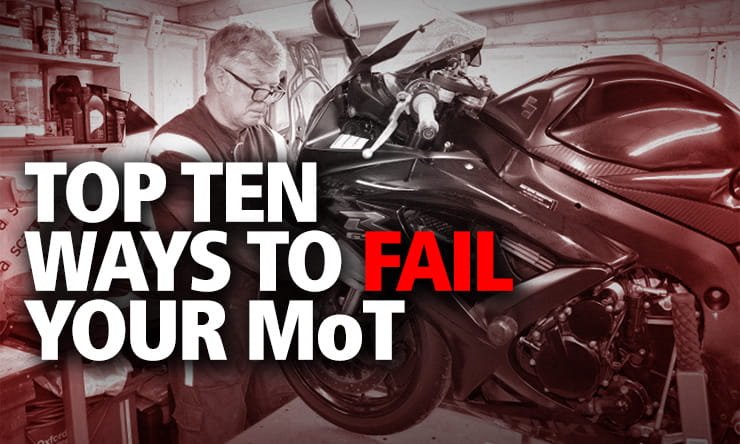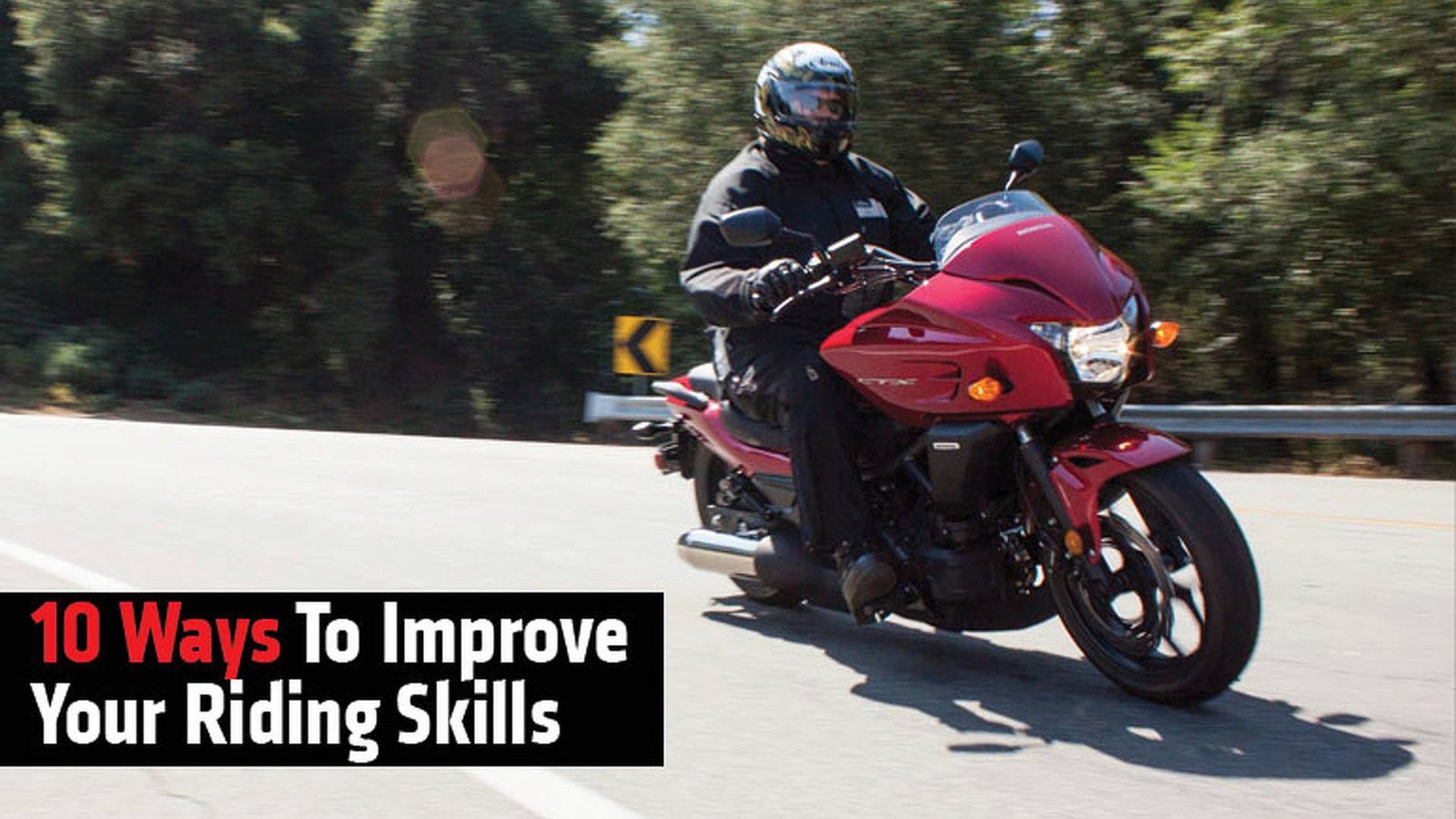New motorcycle riders should prioritize safety by wearing appropriate gear and mastering basic controls. Understanding traffic laws and practicing situational awareness are essential.
Embarking on the journey of becoming a motorcycle rider can be both exhilarating and daunting. As a beginner, grasping the fundamentals of riding safely and confidently is paramount. These initial steps are foundational, not just for enjoyment, but for your protection on the road.
By focusing on a few vital tips and tricks, you can navigate your motorcycle experience with increased safety and greater peace of mind. In the world of motorcycling, where the margin for error is slim, this guidance is invaluable. From selecting the right motorcycle to honing your riding skills, this guide serves as a starting point for your two-wheeled adventure. As you rev up your engine and set out, remember that every pro rider was once a beginner; it’s through patience, practice, and persistence that you’ll join their ranks.
Table of Contents
Embarking On Two Wheels
Starting your journey as a new motorcycle rider is exciting. There’s freedom in the feel of the wind and power at the twist of the throttle. But, safety and knowledge are keys to a long and joyful ride. These tips and tricks prepare you for the road ahead.
Choosing The Right Motorcycle
Understanding your needs before stepping into the motorcycle world is essential. There are different rides for different riders.
- Consider your skill level: Start with a bike that matches your experience.
- Look for comfort: Your bike should fit your body. This means easy reach to the ground and handlebars.
- Think about the purpose: Are you commuting, touring, or maybe hitting the trails?
- Research and test drive: Get a feel for different bikes. A test drive can seal the deal.
Essential Gear For Safety
Proper gear can save your skin, literally. When you ride, gear up head to toe. Safety comes first.
| Body Part | Protective Gear |
|---|---|
| Head | A certified helmet |
| Eyes | Impact-resistant eyewear |
| Hands | Gloves with palm sliders |
| Body | Armored jacket and pants |
| Feet | Over-the-ankle boots |

Credit: www.facebook.com
Mastering The Basics
When entering the world of motorcycling, mastering the basics determines not just enjoyment but also your safety on the road. Let’s delve into the essentials that every new rider should hone before hitting the tarmac.
Taking A Riding Course
A formal riding course teaches vital skills for safe riding. Certified instructors guide you through techniques that books can’t fully convey. Experienced mentors explain traffic laws, offer hands-on practice, and provide valuable feedback.
- Ensure safety — learn from professionals.
- Gain confidence — practice in controlled environments.
- Understand rules — know what’s legal and what’s not.
Learning Key Controls
Familiarize yourself with your motorcycle’s controls. Throttle, brakes, clutch, and gears are the essentials. Recognizing and using them without looking keeps your eyes on the road.
| Control | Function | Tips |
|---|---|---|
| Throttle | Controls speed | Smooth twists only |
| Front Brake | Slows the bike | Apply gently |
| Rear Brake | Stabilizes bike | Use sparingly |
| Clutch | Engages gears | Press fully during gear change |
| Gears | Changes speed ranges | Practice shifting smoothly |
Commit these controls to muscle memory. Regular practice leads to intuitive reactions during unexpected road situations.
Safety First
When you swing a leg over your motorcycle, excitement runs high. But remember, safety always takes pole position. Whether you’re cruising city streets or exploring country roads, safety is paramount. Let’s gear up and dive into essential tips that can save lives.
Understanding Road Rules
Knowing traffic laws is the first step toward a safe ride. Rules are not just guidelines; they keep everyone out of harm’s way. Here are key points every motorcyclist should follow:
- Learn local traffic signs and signals.
- Stay within speed limits; they are there for a reason.
- Signal every turn and lane change.
- Maintain a safe distance from other vehicles.
- Avoid distractions.
Make sure to brush up on the road rules often. They might change, and staying current keeps you safe.
The Atgatt Principle
The motto ‘All The Gear, All The Time’ (ATGATT) saves skin and bones. Riding without proper gear invites trouble. Consider these essential items:
| Gear | Importance |
|---|---|
| Helmet | Protects your head, mandatory in most places. |
| Jacket | Shields your body, opt for abrasion-resistant materials. |
| Gloves | Keeps your hands safe and improves grip. |
| Pants | Protects legs from road rash. |
| Boots | Guards your feet and ankles. |
Wear the right size and ensure your gear meets safety standards. Proper gear forms a crucial shield in case of falls or crashes.

Credit: www.pinterest.com
Maintenance Matters
Kick-starting your motorcycle journey isn’t just about the thrill of the ride. It’s also about keeping your two-wheeled beast in tip-top shape. Regular maintenance ensures safety, reliability, and a long life for your motorbike. Eager to hit the road? Keep these maintenance tips in hand!
Routine Checks
Routine maintenance acts like a health check for your motorcycle. These daily and weekly checks are crucial. They keep unexpected breakdowns at bay.
- Tire pressure – essential for good grip and fuel efficiency.
- Brake function – vital for your safety on the road.
- Oil levels – keep those gears running smoothly.
- Lights and signals – for clear communication with fellow road users.
- Chain tension – ensures optimal power delivery.
Diy Vs Professional Services
Knowing when to DIY and when to call in the pros is a game-changer. Understand your project’s scope before diving in.
| DIY Maintenance | Professional Services |
|---|---|
| Oil and filter change | Valve adjustment |
| Air filter replacement | Major electrical work |
| Chain cleaning and lubrication | Transmission issues |
| Brake pad replacement | Suspension tuning |
For tasks beyond basic upkeep, seek a trusted mechanic. Their expertise will save time and prevent costly mistakes.
Navigating Traffic
Navigating traffic on a motorcycle demands skill and awareness. New riders must learn to move safely among cars. A key focus is understanding the space around a bike.
Lane Positioning
The right lane position keeps you safe and visible. On a motorcycle, you have three choices:
- Left, center, or right parts of a lane.
- Choose based on road conditions, traffic, and visibility.
- Situational awareness is vital. Change position as needed.
Remember, the goal is to maximize your visibility to others and your view of the road.
Reading Drivers’ Intentions
Anticipate what others might do. This can save lives. Keep these points in mind:
- Watch for turn signals and wheels turning.
- Eye contact is not a guarantee of safety. Stay cautious.
- Mirrors help, but always check blind spots.
Gather clues from car movements to predict actions. Be ready to react quickly.
Weathering The Storm
For new motorcycle riders, nature can pose unique challenges. Understand the essentials of riding in varied weather. Mastery over these conditions assures a safer, more exhilarating journey. Let’s explore how to tackle rain and extreme temperatures.
Riding In Wet Conditions
Water on the road means less grip for your tires. Stay upright and confident during a downpour with these tips:
- Reduce Speed – Slower speeds maintain better traction.
- Increase Following Distance – Leave more space between vehicles.
- Avoid Puddles – They may conceal deeper potholes or debris.
- Wear Waterproof Gear – Keep your focus with dry clothing.
- Use Rain Mode – If available, switch to your bike’s rain setting.
- Practice – Try wet weather riding in a safe area first.
Remember, gentle movements with both the throttle and brakes are key.
Adapting To Temperature Extremes
Extreme cold or heat tests your body and your bike. Adjust your approach with these strategies:
| Cold Weather | Hot Weather |
|---|---|
| Layer Clothing – Insulate against the chill.Heated Gear – Invest in heated gloves or jackets.Windscreen – Add protection against biting winds. | Hydrate Often – Prevent dehydration with regular sips.Vented Gear – Wear breathable fabrics for airflow.Plan Routes – Choose paths with shade during peak sun. |
Always inspect your bike before rides to ensure it’s conditioned for the temperature swings.
Ride Planning
Imagine exploring the open road, the wind on your face, and the thrill of adventure. Proper ride planning is the secret to making this dream a breeze. Here’s how to prep for your journey.
Mapping Your Route
A good ride starts with a great plan. Pick roads suitable for bikes. Avoid heavy traffic or poor road conditions. Use online maps or motorcycle apps with turn-by-turn navigation. It’s smart to check the weather for the day. Sunny skies mean a smoother ride.
- Choose scenic routes for more enjoyment.
- Avoid rush hour to keep stress levels low.
- Inform a friend about your route for safety.
Rest Stops And Fueling
Long rides need breaks. Plan for rest stops every hour or two. It keeps you fresh and safe. Stopping at local attractions adds fun to your journey.
| Distance | Rest Stop | Fueling Station |
|---|---|---|
| Every 50 miles | Quick stretch & hydrate | Check fuel level |
| Every 100 miles | Longer rest, walk around | Top off the tank |
- Carry enough cash for places that don’t take cards.
- Know the location of gas stations along your route.
- Hydrate well, and munch on snacks to keep energy up.
Enhancing Skills
Enhancing skills is crucial for new motorcycle riders. Gaining confidence on two wheels involves more than just the basics. It requires commitment to continuous learning and practice. Advanced techniques can save lives and make riding an even more enjoyable experience. Whether taking to the streets or adventuring on open roads, mastering these skills ensures safer rides. Let’s gear up and explore how to boost your riding prowess.
Advanced Riding Courses
Taking advanced riding courses is a game-changer for motorcyclists. These courses cover a variety of topics:
- High-speed maneuvers to sharpen highway skills.
- Techniques for better cornering and handling.
- Defensive driving tactics to anticipate and avoid hazards.
Such courses often include hands-on sessions with professional instructors. They provide feedback on improving your riding form and decision-making abilities.
Practicing Emergency Maneuvers
Knowing how to handle your motorcycle in emergencies is vital. Regularly practicing emergency maneuvers can prepare you for unforeseen situations. Here’s what to focus on:
| Maneuver | Benefit |
|---|---|
| Quick Stops | Reduces stopping distance |
| Swerves | Avoids obstacles swiftly |
| Counter-steering | Enables fast and safe turns |
Find a safe, open area away from traffic to practice. Start slowly, then build up speed as you gain confidence. The goal is to make these maneuvers second nature.
Joining The Community
Welcome to the roaring world of motorcycling! As a new rider, mastering the bike is just part of the journey. Embracing the motorcycle community plays a crucial role in enhancing your experience. This vibrant collective offers support, camaraderie, and a wealth of knowledge. Let’s dive into how you can join this exciting fraternity.
Connecting With Other Riders
Building a network with fellow enthusiasts opens doors to wisdom, friendships, and road companions. Start with these steps:
- Join online forums such as motorcycle-specific subreddits or Facebook groups.
- Look for local moto-clubs and consider becoming a member.
- Attend meet-ups to exchange tips and share stories with experienced riders.
This connection is not just about fun. It’s about growing as a rider. You learn about safety practices, maintenance tips, and the best gear. You also find mentors and advisors who guide you through your motorcycle journey.
Participating In Events
Events are the beating heart of the motorcycling world. They range from casual group rides to large-scale rallies. They’re perfect for:
- Enjoying the thrill of riding in a group
- Witnessing diverse styles of motorcycles and riders
- Learning from demonstrations and workshops
Participating in these events also helps in supporting local businesses and charities. Check event calendars and sign up for gatherings that interest you. Whether it’s a charity ride or a motorcycle show, immerse yourself in the action!

Credit: www.magzter.com
Continual Improvement
For new motorcycle riders, mastering the basics is just the beginning. The journey towards becoming a skilled rider is ongoing. New riders must focus on continual improvement to enhance safety, skill, and confidence on the road. Embracing a mindset of growth helps riders navigate their journey with purpose. Dive into actionable tips for ongoing motorcycle mastery.
Setting Riding Goals
Goal-setting is a robust method for tracking progress. It helps riders focus and achieve specific milestones. Start by outlining clear, achievable goals. These could be related to improving riding techniques or taking on new routes. Keep goals SMART: Specific, Measurable, Achievable, Relevant, and Time-bound.
- Specific: Detail what you want to master, like cornering or braking.
- Measurable: Decide how to measure success, perhaps through distances or time.
- Achievable: Set goals within your current ability to prevent frustration.
- Relevant: Choose goals that matter to you and will make a real impact on your riding.
- Time-bound: Give each goal a deadline to maintain focus and commitment.
Reflecting On Rides
Reflection is crucial for continual improvement. After each ride, spend time analyzing your performance. Identify what went well and areas for improvement. Use a reflective diary or a riding app to track your thoughts and progress. Trips offer lessons; learn from them to avoid repeating mistakes.
| Reflective Point | Notes for Improvement |
|---|---|
| Road Awareness | Need to scan far ahead for potential hazards. |
| Braking Consistency | Work on smoother brake application. |
| Confidence in Turns | Practice low-speed maneuvers in a safe location. |
By setting goals and reflecting on rides, new riders can achieve a continuous cycle of learning and improvement, leading to greater skill and enjoyment on the road. Keep pushing boundaries, one goal at a time.
Frequently Asked Questions
What Do I Need To Know To Be A First Time Motorcycle Rider?
To start motorcycling, acquire the correct gear, including a helmet, jacket, gloves, and boots. Take a training course to learn essential skills and safety. Obtain a motorcycle license after passing required tests. Start with a bike suitable for beginners. Always prioritize safety on the road.
What Not To Do As A Beginner Motorcycle?
Avoid riding beyond your skill level, neglecting safety gear, skipping regular maintenance, forgetting to check weather conditions, and underestimating road hazards. Always prioritize safety and proper training as a beginning motorcyclist.
What To Do When You Have A New Motorcycle?
Read the owner’s manual for maintenance schedules. Register your motorcycle and insure it properly. Familiarize yourself with its features and handling. Schedule a professional inspection for safety assurance. Ride responsibly to ensure your safety and that of others.
How Do I Prepare For My First Long Motorcycle Ride?
Check your motorcycle thoroughly, ensuring tires, brakes, and fluids are optimal. Pack emergency gear, layered clothing, and water. Plan your route with rest stops and weather conditions in mind. Familiarize yourself with local traffic laws. Start with shorter rides to build stamina.
Bottom Line
Embarking on the journey as a new motorcycle rider can be exhilarating yet daunting. Remember, practice makes perfect. Equip yourself with the right gear, stay vigilant, and embrace continuous learning to navigate the roads safely. Let these tips guide you toward an enjoyable and secure riding experience.
Safe travels!




Leave a Reply